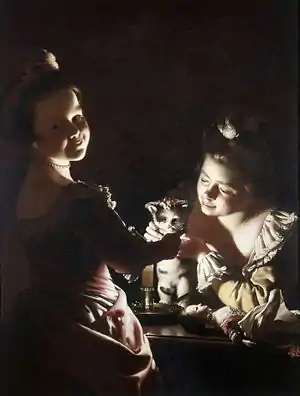National Heritage Memorial Fund
The National Heritage Memorial Fund (NHMF) was set up in 1980 to save the most outstanding parts of the British national heritage, in memory of those who have given their lives for the UK. It will receive £20 million Government grant in aid between 2011–15, allowing for an annual budget of between £4 million and £5 million.

A diverse list of over 1,200 heritage items have been safeguarded by the National Heritage Memorial Fund to the tune of nearly £300 million, including:
- The St Cuthbert Gospel (£4.5M to the British Library, 2012)
- The Mappa Mundi
- The Mary Rose
- Flying Scotsman
- The last surviving World War II destroyer, HMS Cavalier,
- Orford Ness nature reserve in Suffolk
- Beamish Exhibition Colliery
- Sir Walter Scott manuscripts
- Antonio Canova's "The Three Graces"
- Picasso's "Weeping Woman"
- The Nativity, a miniature by Jean Bourdichon
- Thrust2 world land speed record car
- The Amarna Princess, an ancient Egyptian statuette, later proved to be a forgery by Shaun Greenhalgh
- Canterbury Astrolabe Quadrant.
- The personal archive of Siegfried Sassoon, World War I soldier, author and poet
- Skokholm Island, site of Special Scientific Interest (SSSI) in Pembrokeshire
- The Craigievar Express[2]
The NHMF is funded by grant in aid from the Government through the Department for Culture, Media and Sport.
In 1993 NHMF was given the responsibility for distributing the share of heritage funding from the National Lottery for the heritage good cause. It does this through the National Lottery Heritage Fund.
References
- "The dark side of The Kitten: A Wright of Derby for Kenwood." Julius Bryant, Apollo, December 1996, Vol. 144, No. 418 (new series), pp. 18–19.
- "Museum buys steam tricycle". The Glasgow Herald. 29 March 1985. Retrieved 11 October 2016.